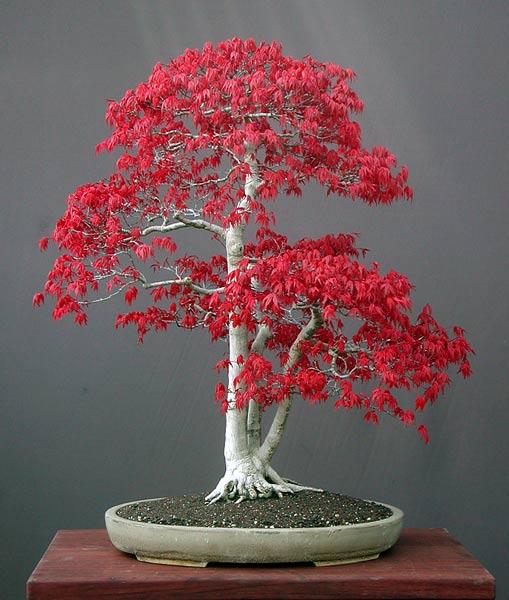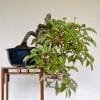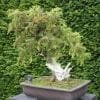If you’re new to Bonsai, the good news is that there are a lot of ideal Bonsai plants for beginners.
Even experienced hobbyists looking for a good gift Bonsai will do well to recall the basics of Bonsai, because it’s easy to forget what you know, as your practices become second nature and instinctual, thus leaving out important details when introducing Bonsai to your friends who are beginners to Bonsai.
To bring nature into your house or garden in an affordable way, there’s really nothing out there for sale that’s as easy as Bonsai. This review has shown a few types of Bonsai species that are ideal for beginners.
There are Bonsai that are affordable in price, with some that are easy to take care of in terms of maintenance. There are different options to allow you to select one that fits the type of style you are looking for, whether it’s a more traditional looking Bonsai tree, or a hardier tree that may look less traditional.
Bonsai plants are an especially good deal because they last so long. Don’t let the low prices trick you into thinking that Bonsai plants are cheap, though since they can literally survive over a hundred years; when cared for properly, your Bonsai is perhaps the only pet you could buy, which could legitimately outlive you.
Growing a bonsai tree is a unique hobby that provides the opportunity to grow a miniature tree in your own home. The small size of the bonsai makes it an ideal potted plant to place on a desk, dining table or an outdoor garden. However different types of bonsai require different methods of care and attention. To find the best bonsai trees, it’s important to understand the types of plants to choose from, and the origins of this unique shrub.
Bonsai Size
Most trees in the wild are much too large to keep within a simple pot, so people commonly believe that a bonsai is a type of hereditary dwarf plant. This is actually not true, and in fact a bonsai is a normal tree that may grow in different shapes and sizes. Some mountainous species of bonsai grow quite large, while lowland versions of the same tree are picked because of their smaller size and are thus called bonsai trees.
Bonsai Upkeep
The bonsai requires continual upkeep to maintain. No matter what type of bonsai plant you decide to buy, they will all require a fair amount of pruning and maintenance.
In fact, it’s the upkeep of the bonsai that is supposed to function as a type of meditative practice and an art form. A bonsai grower may carefully prune and sheer the tree as it grows in order to help the plant symmetrically match the style of the pot.
Bonsai enthusiasts attest that this process helps the owner learn about the importance of carefully tending to a living organism, while also helping the owner clear one’s mind of day-to-day stresses and refocusing energy on the careful maintenance involved with the art of gardening.
Finding The Best Bonsai Tree
The bonsai comes in many varieties, which makes it possible to choose from a variety of styles to find the one that relates the most to your aesthetic taste. Each type requires different methods of care, so pick a bonsai tree that is most appealing to you in terms of style and maintenance.
Deciduous Trees
Many beautiful varieties of the bonsai are deciduous, meaning that their leaves change color and drop along with the seasons. You will find Japanese red maple and cherry bonsai trees, as well as various other varieties that turn to lush colors around autumn.
Such a tree may become stark during wintertime, but the deciduous tree allows you to observe the changing of the seasons, something that many bonsai owners find to be pleasant.
A deciduous tree requires outdoor care, with temperatures above 35 degrees Fahrenheit. It should be taken inside after temperatures drop below freezing during winter periods. Deciduous trees require special attention to minimize outdoor pests.
Evergreen Trees
An evergreen bonsai is similar to a pine tree, in that it remains green all season long. This type of bonsai includes cypress, cedar, pine and spruce varieties. Among bonsai, this requires considerable less maintenance.
They can be kept inside, in a relatively cool location, and they require some sunlight, especially in the mornings. Gardeners often keep this type of bonsai near a window, but they remove it in the afternoon to avoid intense mid-day sunlight that could be too harsh.
Flowering Trees
A flowering bonsai creates flowers, or fruit. This includes the Chinese perfume tree, or the Chinese flowering white serissa. These trees maintain their namesake by providing pleasant citrus aromas like orange and lemon.
A flowering tree may be kept inside, and may also come in deciduous or evergreen varieties. It’s especially important to keep such a tree supplied with fertilizer to enhance the nutrients needed for flower production.
The Origins of Bonsai
Bonsai is the ancient East Asian tradition of growing and cultivating miniature pet trees indoors or potted in a garden. Bonsai is about taking a small part of nature, and bringing it into our lives, letting it lift up the artificial environment around us with its serene energy and scent.
With influences dating back to ancient China, Bonsai was popularized in Japan over a thousand years ago and is a Japanese word meaning a potted plant or tree. Bonsai trees are tiny nature-scapes, and traditionally are offered for sale with some kind of moss, pebble, and / or rock sculptures at the foot of the tree, giving it the feel of more of a fresh or complete scene, rather than your typical houseplant in soil.
Life gets so mundane without little oases of nature placed around us in carefully designed ways. Sterile, plant-free environments are generally harsh and as indoor plants go, Beginner Bonsai trees are some of the easiest, longest-living, and most rewarding plants to work with.
If you’re new to the art of Bonsai and are looking for easy Bonsai trees to grow, this review will help to elucidate on how to get started caring for your Bonsai and how to keep it healthy. Even experienced hobbyists Bonsai growers will find good gift ideas below to help inspire ideas for how to give the gift of a Bonsai to beginners.
Overall, Bonsai is an incredibly rewarding hobby and is something you can inspire your friends to become passionate about as well.
The majesty and grandeur of nature embodies a special and serene kind of beauty that no human being can deny. People are almost always going camping and getting outside, and most of the people interested in beginner Bonsai trees have some kind of appreciation for nature that they are looking to express and better invite into their lifestyle.
Over time, as people have moved into more urbanized areas and cities, we have achieved a growing tension of sorts. We like nature, but we want the safety of home– so that is why it has become harder and more difficult to re-create nature inside our living individual spaces.
Bonsai Tree Beginner Basics
Firstly, Bonsai trees are indeed tiny little trees, but they actually are no different genetically than their full-sized clones and cousins. There are indeed “dwarf” types of species out there for sale in the world of Bonsai, but these are mainly bred to keep leaf size small for the eventual plant that emerges.
Nonetheless, Bonsai trees will naturally grow smaller leaves as they are pruned, potted, and prevented from growing to a normal size for a tree. Similarly to how goldfish grow to fit the size of their containers,
Bonsai trees stay small because their root systems are limited to the size of the pot, and because the Bonsai gardener keeps pruning the tree, thus limiting its growth to a miniature size.
Perhaps the biggest challenge with a beginner Bonsai tree is finding a happy medium when it comes to watering.
Two of the biggest reasons Bonsai trees die early are due to overwatering or underwatering.
Over-watering your Bonsai can quickly result in root rot. Thus, it’s vital to understand whether the soil in your Bonsai tree should always be damp, or if it should usually be dry.
Evergreen Bonsai trees, for example, need more water and their soil needs to stay damp, while tropical Bonsai trees typically require less water and are more susceptible to root rot.
Every Bonsai tree species is different, so it’s crucial to understand what your tree will specifically need in watering. Then, keep a close eye on the plant to make sure it’s staying healthy and not falling prey to pests.
Interestingly enough, fruit from Bonsai trees is not always smaller than from full-sized trees. Fruits such as pomegranates, apples, figs, lemons, limes, oranges, and other citrus, all grow on Bonsai trees as well, and are edible.
Pomegranates and figs grow on Bonsai trees in a small size, but figs, apples, and citrus often bloom to a roughly full-sized diameter from Bonsai trees.
Certainly, you can imagine that a fully sized Meyer lemon would weigh down the branch of a small Bonsai lemon tree. This is why it is important to use wire reinforcements for the branches of a young Bonsai tree.
Best Pruning Practices for Bonsai Tree Beginners
In order to get great fruit and flowers from a Bonsai tree, pruning is vital. Clipping stray twigs and branches containing old decaying fruits and flowers will give your tree the best chance to regrow and flower again as soon as possible. For trimming your Bonsai tree, the pencil rule is helpful for knowing what tool to use.
For twigs smaller than the diameter of a pencil, any sharp sturdy pair of shears will do well. Just keep in mind that you want to trim the Bonsai tree as close to the root’s branch (or the trunk) as possible, so as to minimize scarring on your Bonsai tree. This will also help minimize your plant’s recovery time.
For any twigs larger than the diameter of a pencil, concave shears are necessary. These shears have a bent tip and almost look a bit more like fingernail clippers than shears. The point of these types of shears is to cut the branches in a way that keeps the resulting nub as small as possible.
It’s vital to remember that while it’s fast and easy to cut branches off from your Bonsai tree, it’s a slow and patient process to get new growth back– so it’s a good tip for beginners to clip the Bonsai tree sparingly, and be patient.
In terms of what’s out there for sale, for the price, there is no more efficient way to get real fruit grown inside your house than by working with Bonsai.
Hawaiian Umbrella Bonsai
There are a lot of great plants to start off with for Bonsai, but one of the most popular and typically cheap in terms of price is the Hawaiian Umbrella Bonsai tree (click here to see lowest prices). Also called the Dwarf Umbrella, Golden Hawaiian Umbrella, or Schefflera arboricola, this plant is very hardy indoors, and is perhaps the easiest to care for due to its tolerance for dehydration and lack of light. All plants, of course, need light and water to survive, but the Hawaiian Umbrella can go without these staples for longer than almost any other type of Bonsai tree, which makes it a fantastic choice for a person’s first Bonsai tree.
Hawaiian Umbrella trees are actually native to Taiwan and are thus tropical plants. They were originally made popular as Bonsai trees by David Fukumoto, a resident of Hawaii, which is where they get the Hawaiian reference in their name. It’s a common mistake to think that these plants are native to Hawaii, which is also tropical.
The main challenge with these Hawaiian Umbrella Bonsai trees comes in pruning them into a “traditional” Bonsai shape since they tend to have a mind of their own when it comes to growth. Their branches grow in thickly, so it’s easy to under or over-trim. Given this, a pair of good Bonsai shears will be a must-have with your Hawaiian Umbrella tree, which truly is one of the best beginner Bonsai trees out there.
Other than the Hawaiian Umbrella, great starter Bonsai species include the Ficus, which is also relatively easy tree, very immune to gardener error, and easy to grow indoors. Outdoor Bonsai trees are somewhat more difficult, in that they do need to be brought in if the weather drops below freezing for too long. Just needing light through a window, the Ficus can thrive indoors, which definitely keeps it in the “easy” category of what’s out there for sale (click here for lowest prices).
Baby Jade Bonsai
Jade plants look fantastic, without a doubt, and the Baby Jade is an even more intriguing plant because the leaves stay so small. Jade is excellent as a Bonsai plant since it is so forgiving of an owner forgetting to water it. Baby Jade plants store relatively large amounts of water in their leaves, which they can draw on if there is a drought or in the event of a forgetful gardener.
Norfolk Island Pine
The classic miniature pine from Norfolk is an excellent choice when it comes to Bonsai. This species will do well with just about any style, and has a captivating, Christmas tree-like scent. Not actually pine trees, the Norfolk Pines need only a few hours of sunlight each day to get by. This Bonsai needs more water in summer and less in winter like almost all other Bonsai types, Norfolk Island Bonsais do best when the soil is almost dry but not quite arid.
Click here for the lowest prices on Norfolk Island Pine Bonsai trees.
Japanese Red Maple Bonsai Tree
One of the most recommended bonsai starter trees is the Japanese Red Maple bonsai tree. Many people adore this bonsai starter tree because during the spring and autumn months, the leaves turn into vibrant shades of orange and red. During the summer months, the leaves turn a deep red. This bonsai tree stands very upright and the leaves made be cut down to less than an inch, which is extremely ideal for the Japanese Red Maple bonsai tree. This type of bonsai starter tree is also extremely affordable and can handle mistakes of a novice bonsai enthusiast.
Sea Grape Bonsai Tree
The Sea Grape bonsai tree is another perfect example of a bonsai starter tree. It grows mainly long the southern parts of Florida and is known as being a shrubby, shoreline tree. However, this bonsai starter tree remains unique because, while its leaves are often extremely large, they can be easily cut down up to one and a half inches, but still look amazing. Many like the Sea Grape bonsai tree also because the leaves will heal themselves after they are cut, resulting in an unusual and spectacular red edging. It is a hardy bonsai tree and can be trained to sit in a number of different styles, which is why it is perfect as a bonsai starter tree.
Chinese Elm Bonsai Tree
Another great bonsai starter tree for beginners is the Chinese Elm bonsai tree. The Chinese Elm bonsai tree is what everyone pictures when they think about what a bonsai tree characteristically looks like. This type of bonsai starter tree is perfect because, unlike other bonsai starter trees, which thrive better either outdoors or indoors, the Chinese Elm bonsai tree can thrive in either condition. Many people also enjoy this type of bonsai tree for its shape and stunning foliage. While this tree does require sunlight during the summer months, it does require a bit of dormancy during the winter months.
Two last possibilities for a bonsai starter tree are the Brazilian Rain bonsai tree and the Himalayan Cedar bonsai tree. They are both extremely affordable and will grow only up to about 15 inches.
Buddha’s Ear
This traditional bonsai is also called the Chinese Taro or Buddha’s Hand. It produces a lemon-yellow fruit that is decorative, albeit inedible. The tree is said to be fairly easy to maintain. They are also implicated in various types of traditional Chinese medicine.
Important Bonsai Tools
Once you decide on the best bonsai plant, there are some essential tools that you may need for your garden. This includes pruning shears, an indoor humidifier, root rakes, and specialized fertilizers.
Although finding a basic, easy-to-grow bonsai is fairly straightforward, the implementation of these tools will ensure the long-term health of your plant. Fortunately, the bonsai is a slow growing tree that will provide plenty of time for the owner to become acquainted with the necessary care and maintenance required for the plant.
Bonsai Benefits
The bonsai is an excellent gift, as people traditionally pick a bonsai tree as old as the recipient, and so it’s not uncommon for a child to receive such a tree to help teach about the importance of caring and maintaining living things.
For thousands of bonsai enthusiasts across the world, the plant provides an opportunity to relax and reflect on the simpler things in life, and perhaps as you gain insight into bonsai cultivation, you will also experience the benefit of the hobby.


